The ultimate guide to conversational AI in customer support

The shift to generative conversational AI in communications technology
Do you remember the days of snail mail, when you’d wait for days or months (if the recipient was abroad!) to receive letters from a loved one? It was a different world compared to today, when feature-rich, face-to-face conversations with friends and family are just a tap away! Whether you’re on a marathon video call with your best friend or need streamlined notifications from your bank, tech has revolutionized the way we communicate every day.
From signal flares and pigeons to hyper-personalized, AI-enabled communications tech, methods of human communication have undergone massive shifts.

In our world of always-on communication, generative conversational AI of the 2020s has emerged as a tool that allows humans to augment communication capabilities. For example, ChatGPT’s ability to generate organic-seeming responses to human queries is far ahead of the rule-based chatbots of the 2010s.
Before diving into the details, let’s first clarify what we mean when we say ‘conversational AI’.
What is generative conversational AI?
Generative conversational AI refers to a type of artificial intelligence system designed to engage in human-like conversations and generate natural language responses, as opposed to a rule-based chatbot. These AI systems use techniques like Natural Language Processing (NLP) and Machine Learning to understand and generate conversational text-based or spoken responses.
Let’s break this down into its constituent parts - conversational AI and generative AI.
Conversational AI is an umbrella term that encompasses all the AI technologies that enable computers to simulate human conversations. For example, conversational AI includes chat, voice search, and voice-activated smart devices.
What is generative AI? According to McKinsey, “Generative artificial intelligence (AI) describes algorithms (such as ChatGPT) that can be used to create new content, including audio, code, images, text, simulations, and videos.”
A generative AI model will create new content that closely resembles examples similar to the data it has ingested. Generative AI models take raw data - which can be anything from a technical user manual to a description of artwork - and create a statistically probable output. Generative AI models are trained on massive datasets; the larger the dataset, the more information the model has to work with while being trained.
Customer support chat is an area in which generative conversational AI is extremely useful. Within the customer support chat use case, there is both a need for cutting-edge conversational AI from a customer perspective and the potential to make a significant impact from the business perspective. For example:
62% of people would rather use a chatbot than call customer support
AI chatbots can reduce customer support costs by 30%
According to Juniper Research, 90% of companies that used chatbots for customer support saw a mere 70¢ cost per interaction and saved 4 minutes per customer support request
Businesses can achieve this with Sendbird’s conversational AI solution. This solution for customer support allows customer service agents to:
Reduce time to ticket resolution by 30%
Increase agent productivity by 30% - 50%
Increase CSAT by 2%
How can your business achieve these results? We’ll take a look at Sendbird’s conversational AI solution in action, understand how to build and deploy an AI chatbot widget for customer support, and learn more about the impact businesses can achieve with generative conversational AI.
But first, let’s take a quick peek at the world’s first steps in conversational AI. Where did we start, and how did we get where we are today?
Generative conversational AI: Humanity’s first steps
When MIT computer scientist Joseph Weizenbaum built the first conversational AI chatbot, ELIZA, in 1966, he never imagined that people would engage in personal, private conversations with the machine. ELIZA had just opened up exciting new possibilities for human-machine interaction, and Joseph Weizenbaum had helped to bring the field of conversational AI into the public eye by building the precursor to the AI chatbots we use today.

Talk to the world’s first chatbot
What happened after ELIZA? Glimpses of the history of conversational AI
Inspired by ELIZA and dreaming about the possibilities of the exciting new world of conversational AI, scientists and technologists set about improving the conversational capabilities of chatbots. It took many attempts, in addition to two AI winters from 1974-1980 and again from 1987-1993, until advances in data processing and machine learning brought us to a conversational AI resurgence.
Let’s take a look at the journey after ELIZA - including what happened when conversational AIs tried to have a conversation with each other.

ELIZA to ChatGPT: How conversational AI has unveiled a new reality for AI in customer support
From the limited conversational capabilities and early programming techniques of ELIZA to the modern generative AI that powers ChatGPT, chatbots have come a long way. ChatGPT’s meteoric rise of 1 million users in 5 days (a record broken only by Threads) and worldwide adoption, along with the various ChatGPT integrations mushrooming all over, indicate that AI chatbots may become an integral part of our lives.
From the perspective of businesses, AI chatbots help with:
Generating leads by proactively asking questions and storing information
Collecting user feedback while the site experience is still fresh
Notifying users about ongoing promotions, sales, and discounts
Offering product recommendations based on previous purchases
Delivering order updates and sending alerts
Ticket deflection through robust self-service options such as an FAQ bot
For users, AI chatbots are a great tool for:
Getting quick answers in a time crunch
Receiving detailed explanations without needing to search
Checking a bank balance, paying a bill, or applying for a loan
Making a reservation or appointment
Scheduling a meeting
Buying an item
Requesting a refund or exchange
Booking tickets
While all of these chatbot use cases are important and useful, one of the most important applications of AI chatbots is in customer support. Let’s take a deeper look at conversational AI in customer support and how businesses can get started with this powerful tool.
Why conversational AI in customer support? A closer look at the numbers
Conversational AI is revolutionizing customer support. With the conversational AI market set to grow to nearly $30 billion by 2028, the market is set on a strong path of growth. Specifically, the chatbot market is expected to be worth $24.64 billion by 2030. Revenue forecasts remain strong: the chatbot market is expected to receive nearly $455 million in revenue by 2027.
While the dollar numbers are encouraging, user interest in chatbots overall is rising, likely spurred by the release and worldwide popularity of ChatGPT. Indeed, searches for the term ‘ai chatbot’, which had been seeing only a slight increase, exploded after the release of ChatGPT.
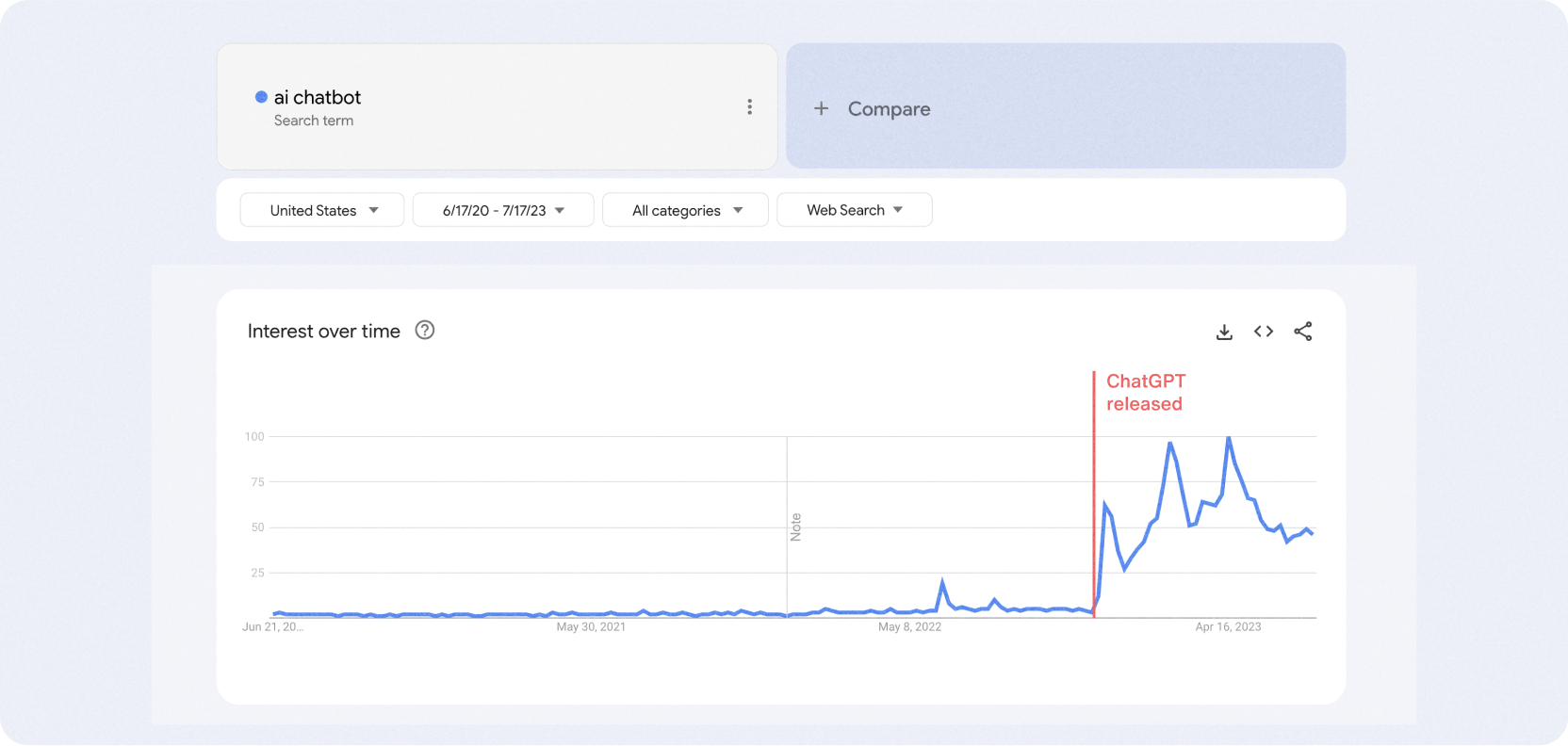
It’s clear that money and user interest both exist - but do these make an impact in the world of customer support? What did companies that invested in chatbots find?
How does conversational AI help customer support functions?
Let’s answer this question from two perspectives: that of the customer and that of the business.
The customer’s perspective on conversational AI
We have all experienced the frustrations of reaching out to customer service representatives. From being put on hold to repeating the same information multiple times and finally ending the conversation with our query unresolved, we are no stranger to the challenges of talking to customer support.
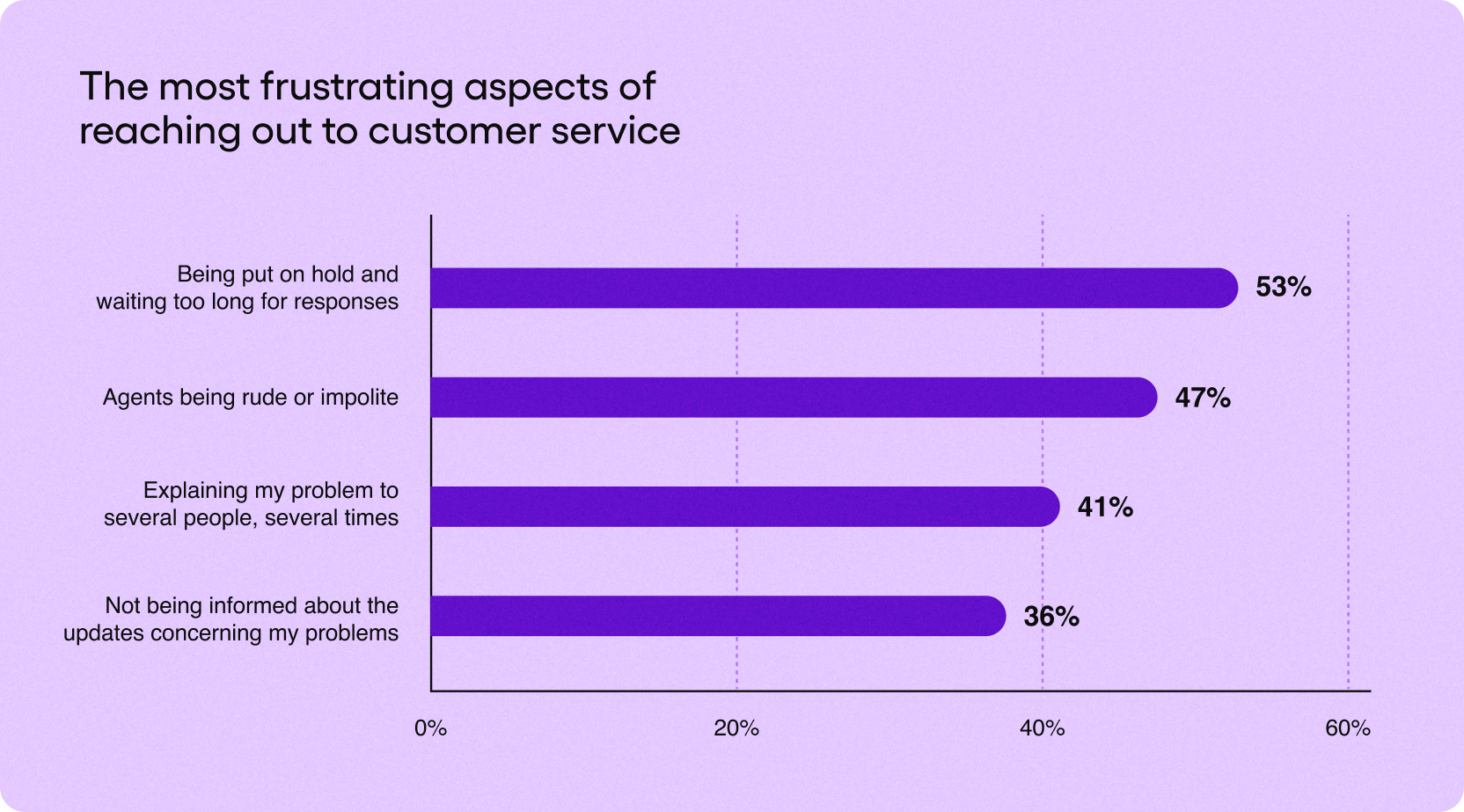
Indeed, the majority of people would prefer to speak to a chatbot instead of talking to a human customer service representative!

In a global consumer channel preferences study, it was found that Millennials and Gen Z were the most likely to prefer talking to chatbots.
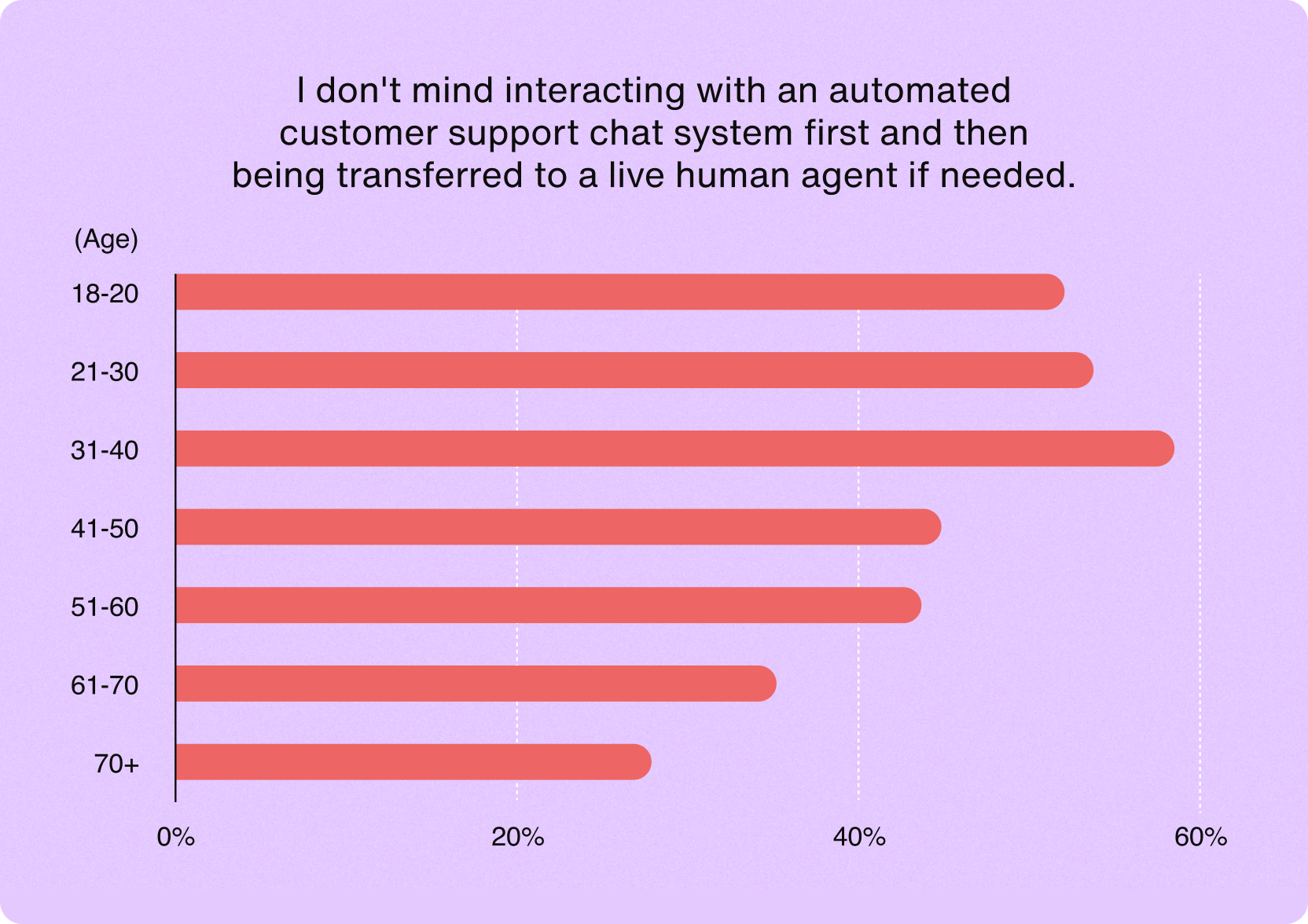
In the same study, results indicated that retention, attention, and advocacy were the results of businesses communicating with consumers using the channels the customers preferred.
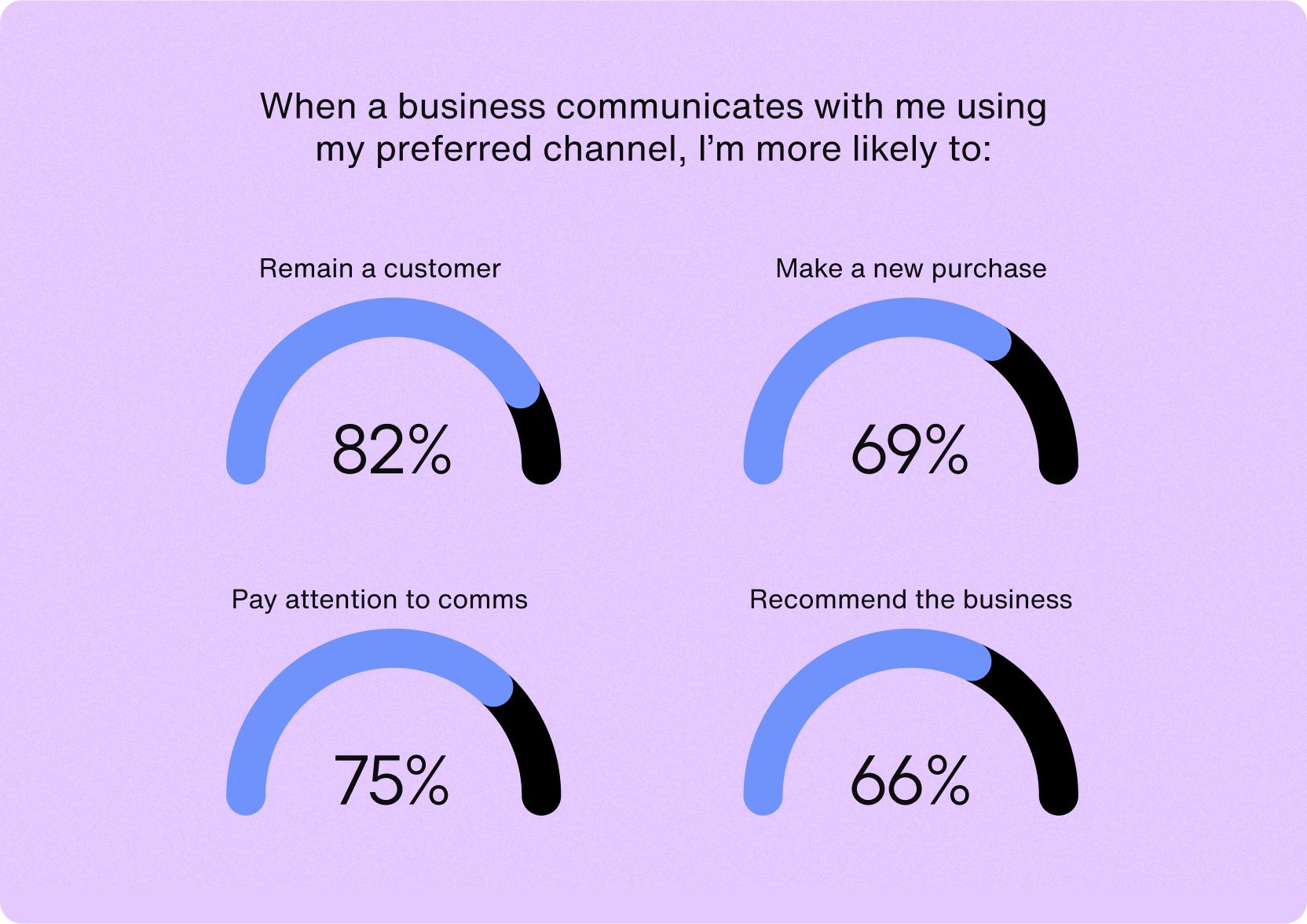
Get the full results of the study
It’s clear that consumers are dissatisfied and that the majority wants to interact with chatbots. How can businesses solve for this? With AI chatbots, of course - but are AI chatbots really as amazing as they’re portrayed? Is their value tangible, or is it a castle in the clouds?
Let’s find out in the next section.
The business perspective on conversational AI
More than 2 billion people shop online. With the large number of increases in the number of online shoppers in the years to come, customer service representatives will need to deal with increased support requests. It follows that the time, effort, and costs required to resolve customer support issues to the customers’ satisfaction will explode. To deal effectively with this, AI chatbots are a fantastic solution.
Here’s why businesses stand to benefit tremendously from deploying AI chatbots for customer support.
Cost savings
AI chatbots can reduce customer support costs by 30%.
According to Juniper Research, 90% of companies that used chatbots for customer support saw a mere 70¢ cost per interaction and saved 4 minutes per customer support request
The total cost savings due to the implementation of chatbots was $11 billion in 2022.
Productivity savings and efficacy
90% of companies resolve complaints faster with conversational AI solutions.
90% of customer issues are solved in 10 or fewer messages.
AI chatbots can instantly access conversation history, customer preferences, and other relevant data to provide a personalized messaging experience.
Agent productivity
64% of customer support agents who use AI chatbots as part of their work are able to spend more time solving complex customer problems.
Chatbots can take care of 80% of routine and repetitive tasks, thereby freeing up agents for more strategic work.
42% of B2B customers increase the volume of purchases after a positive customer experience. AI chatbots can facilitate this by acting as an AI assistant to a human support agent.
User preferences
62% of consumers prefer to talk to a chatbot as compared to a human customer service agent.
56% of Gen Z users want more companies to use chatbots. Millennials especially prefer to have a conversation with an AI chatbot instead of a human.
68% of people think that bots can offer fast resolutions to problems.
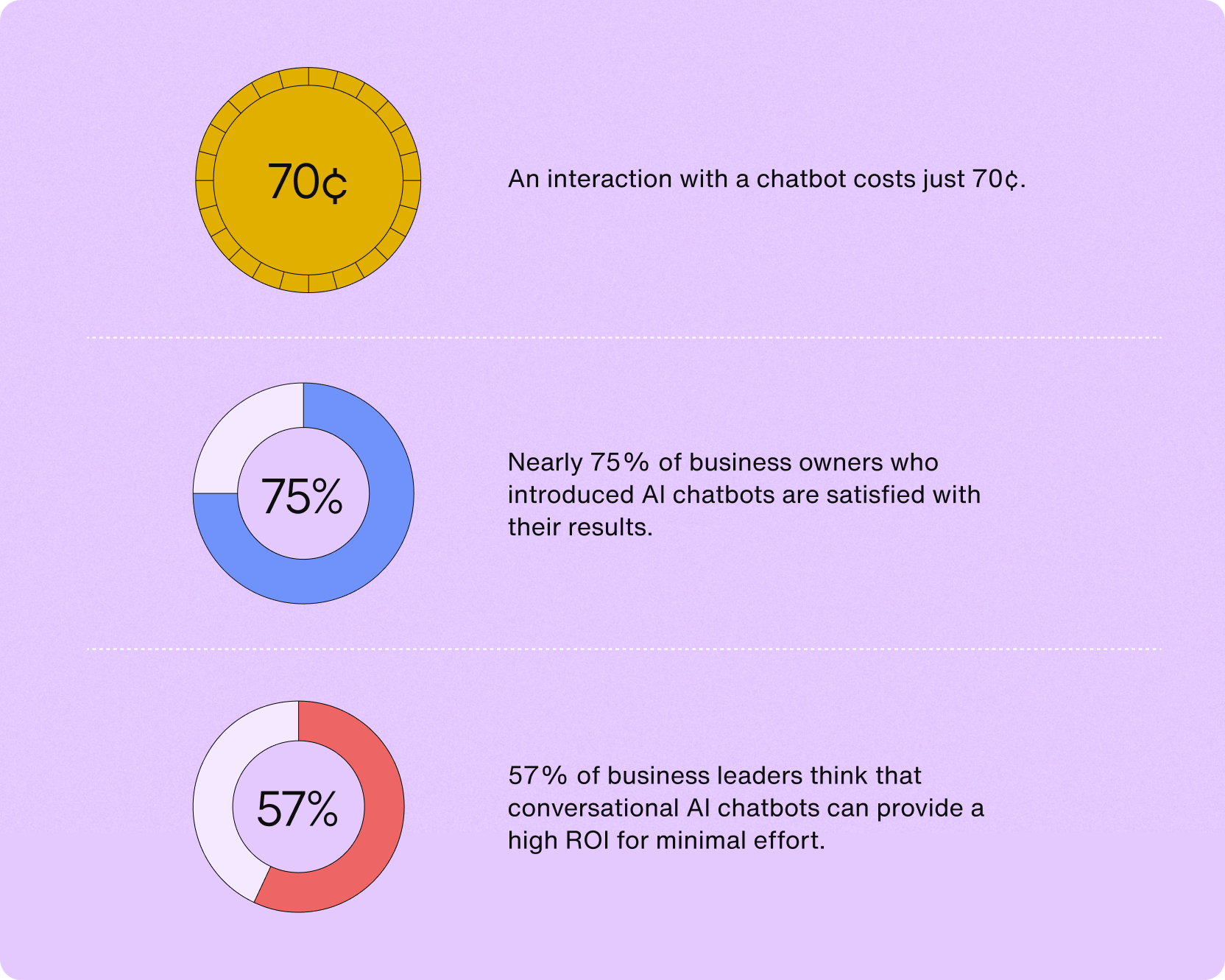
It’s abundantly clear that AI chatbots for customer support deliver better results for both businesses and consumers. Now let’s discuss two uncommon uses of AI chatbots that give your business an edge: ticket deflection and proactive support.
Going beyond the common uses of AI chatbots: Exploring proactive support via generative AI systems and attended AI
Common uses for AI chatbots, such as helping users get quick answers to frequently asked questions, and gathering user feedback, help to save time and money. These uses are rather mainstream today. So which uses provide a competitive edge to businesses?
Proactive support is a use case at which businesses should take a deeper look.
With the help of generative AI, organizations can leverage the vast amounts of data they access in order to provide hyper-personalized and proactive support to users before they even reach out to customer service. For example, organizations may track the page users are visiting and proactively offer product recommendations or answers to FAQs. This is a great way for businesses to achieve high levels of ticket deflection and resolve queries before they arise.
So what happens when user queries reach customer service?
A peek at attended AI: The best of humans and bots
If and when user queries do reach customer service, businesses can consider the use of attended AI.
What is attended AI? Attended AI is like a co-pilot or sous chef, attending to routine low-value tasks (such as looking up a customer’s address details or customer ID) in real-time so that agents are freed up to do more strategic work. Using attended AI during customer service conversations enables agents to learn everything they need to know about a customer, even if the data is spread across multiple platforms.
Attended AI can also guide agents through workflows, processes, or tools, as well as coach them in real time to achieve the best business outcome for the conversation. Attended AI, acting as a coach, can speed up agent onboarding and training.
Because attended AI can boost agent productivity and overall levels of well-being (a study by Cornell University found that 88% of call center workers experience high stress!), organizations can achieve a higher ROI.

AI chatbots for customer support: A win-win solution
AI chatbots offer businesses the incentive to save on support costs, agents the opportunity to do more strategic work, and customers to have their issues resolved quickly and with minimal hassle.
It’s clear that AI chatbots have concrete value for all parties involved. Perhaps because of this, the majority of businesses already use or plan to add AI chatbots to their arsenal.
So how do AI chatbots work? On which technology are AI chatbots based?
Which technology underlies an AI chatbot? An introduction to basic AI concepts
The explosion of worldwide interest in generative AI
ChatGPT’s explosive success has fuelled a worldwide rise in interest in generative AI.
As we can see from Google Trends data, interest in generative AI increased significantly after ChatGPT was released in November 2022.
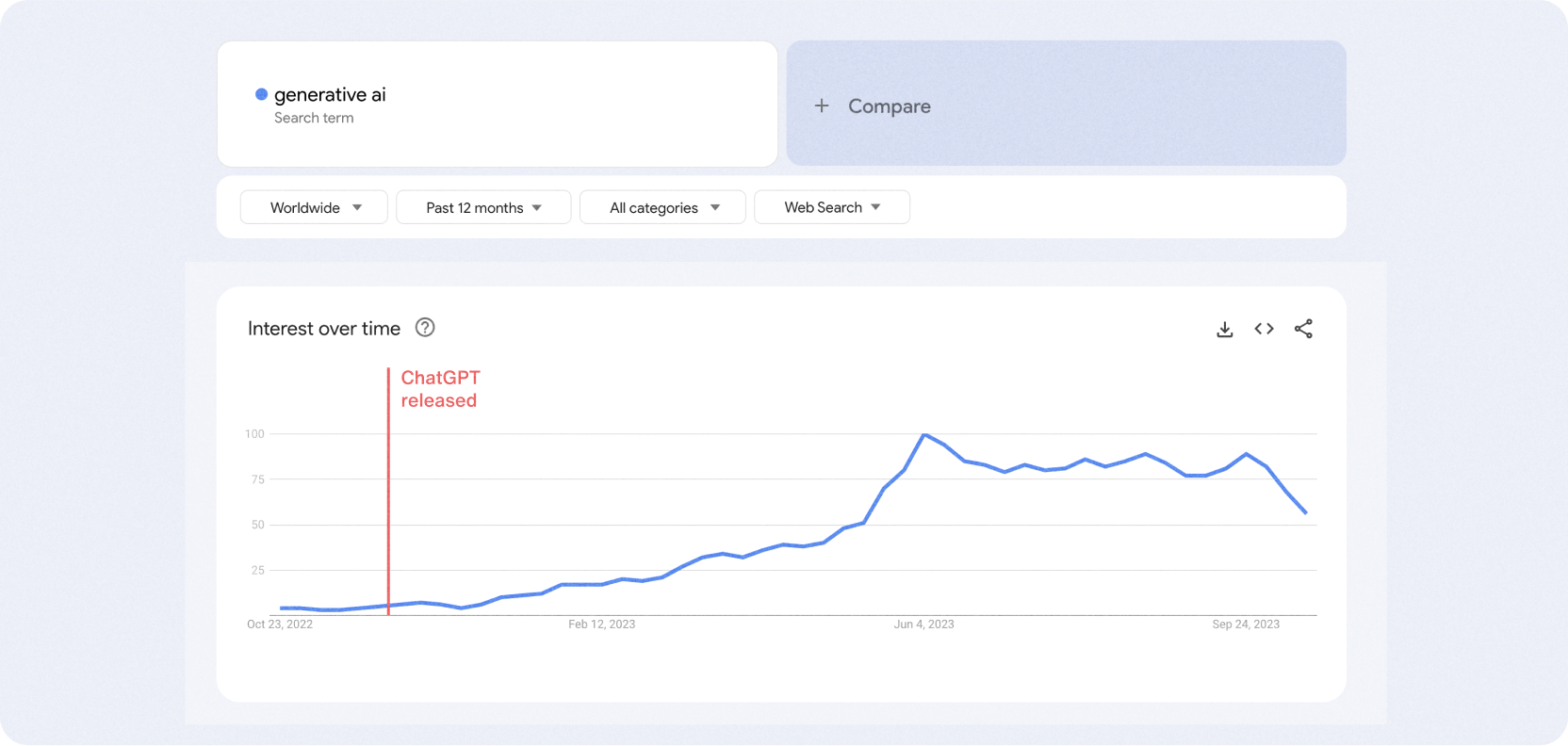
While generative AI is an interesting field that underlies many modern business AI applications, generative AI tends to be a bit of a black box for those not versed in its basic concepts.
Therefore, let’s now demystify some generative AI concepts that you need to know.
Note: This next section discusses technical concepts that underlie generative conversational AI only as it relates to chatbots.
What is generative AI?
Before we go any further, let’s define generative AI.
What is generative AI? According to McKinsey, “Generative artificial intelligence (AI) describes algorithms (such as ChatGPT) that can be used to create new content, including audio, code, images, text, simulations, and videos.”
A generative AI model will create new content that closely resembles examples similar to the data it has ingested. Generative AI models take raw data - which can be anything from a technical user manual to a description of artwork - and create a statistically probable output. Generative AI models are trained on massive datasets; the larger the dataset, the more information the model has to work with while being trained.
When we talk about generative AI, we often use many related terms. What are these terms and what do they mean?
Important AI concepts you need to know before speaking to developers
While you’re likely familiar with some of the terms mentioned here, the below are useful definitions of the important terms. You’ll also see how they overlap.
AI (Artificial Intelligence): An umbrella term that refers to the ability of computers to mimic human intelligence and perform tasks that humans can do to a similar or greater level of accuracy. (Source) AI can sense, reason, and adapt.
ML (Machine Learning): According to AWS, “ML is the science of developing algorithms and statistical models that computer systems use to perform complex tasks without explicit instructions. The systems rely on patterns and inference instead.” (Source) The performance of ML algorithms improves as they are exposed to, and learn from, data over time.
DL (Deep Learning): According to GeeksforGeeks, Deep Learning is a subfield of Machine Learning that involves the use of neural networks to model and solve complex problems. (Source) Neural networks are based on the structure and function of the human brain. Deep learning networks learn from large amounts of data and improve on their own by discovering patterns in data.
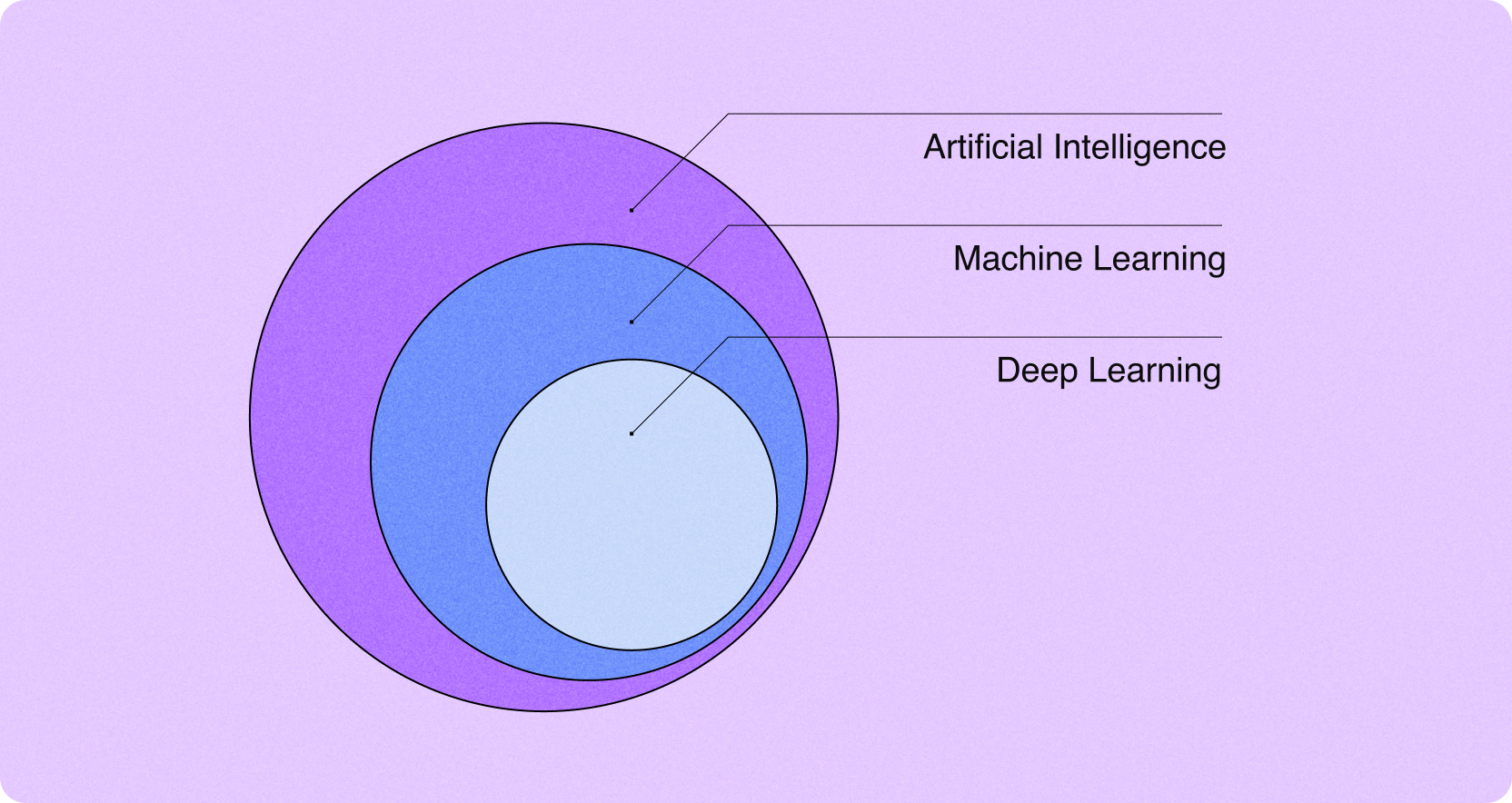
💡 AI vs. ML vs. DL
ML is AI but AI is not necessarily ML!
Similarly, DL is ML but ML is not necessarily DL!
Neural network: According to DeepAI, a neural network is “...a computational learning system that uses a network of functions to understand and translate a data input of one form into a desired output, usually in another form.” Neural networks are modeled on the process by which neurons in the human brain work together to understand sensory input.
Artificial Neural Network (ANN): A type of neural network “that consists of several processing elements that receive inputs and deliver outputs based on their predefined activation functions.” (Source) An ANN is a feed-forward network (data travels in only one direction) that is useful for pattern recognition, speech-to-text uses, and predictive analysis. (Source)
Convolutional Neural Network (CNN): A type of neural network that is “used primarily for image recognition and processing, due to its ability to recognize patterns in images. A CNN is a powerful tool but requires millions of labeled data points for training.” (Source) A CNN can be used for computer vision and photo tagging suggestions.
Recurrent Neural Network (RNN): An RNN is the most advanced type of neural network. An RNN “RNN works on the principle of saving the output of a particular layer and feeding this back to the input in order to predict the output of the layer.” (Source) They have internal memory, which allows the network to remember things about the input it received, and then use this to make precise predictions about the future. (Source) An RNN is used for applications such as natural language processing and sentiment analysis.
Here’s a useful comparison and more details about the types of neural networks:
ANN vs. CNN vs. RNN
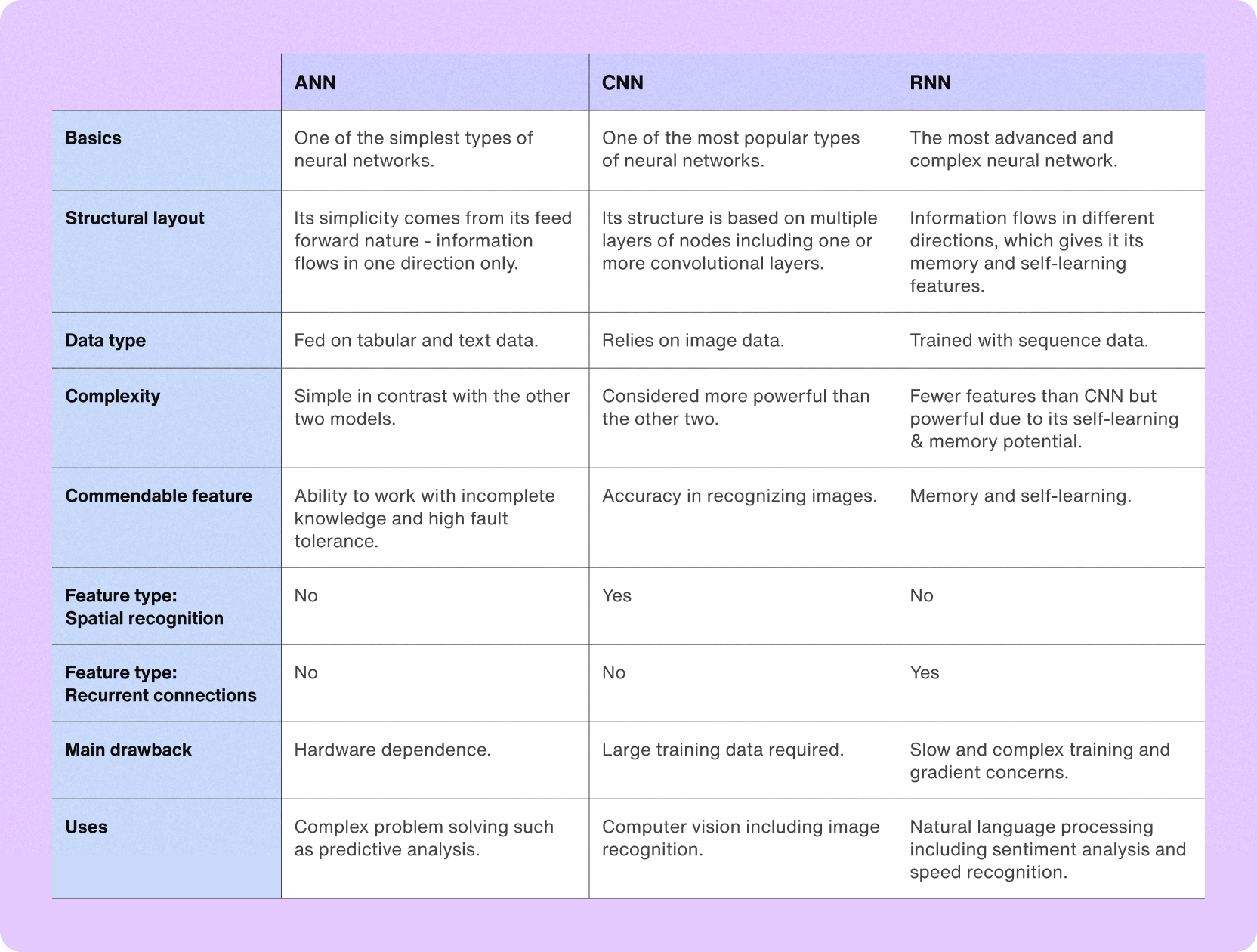
Large Language Models (LLMs): According to Techtarget, “A large language model (LLM) is a type of artificial intelligence (AI) algorithm that uses deep learning techniques and massively large data sets to understand, summarize, generate and predict new content.” Put simply, an LLM is has been trained on vast amounts of data in order to be able to generate similar, statistically probable content. A transformer model is a type of LLM and is used to generate human-like content in terms of text, code, and images. (Source)
Natural Language Processing (NLP): According to AWS, “Natural language processing (NLP) is a machine learning technology that gives computers the ability to interpret, manipulate, and comprehend human language.” NLP helps to analyze and process text and speech data. It can be used to analyze large documents, call center recordings, and classify or extract text.
Natural Language Understanding (NLU): According to Qualtrics, Natural Language Understanding (NLU) is a field of computer science which analyzes what human language means, rather than simply what individual words say. It helps in the analysis of unstructured text, speech, and driving actions such as directing customers to the appropriate service departments.
Natural Language Generation (NLG): According to Qualtrics, “Natural Language Generation, otherwise known as NLG, is a software process driven by artificial intelligence that produces natural written or spoken language from structured and unstructured data.” NLG can be used for many things from writing summaries of reports to analyzing and generating personalized, humanlike responses to customer support queries.
NLP vs NLU vs NLG
NLP, NLU, and NLG are all related terms. In a nutshell, NLP is an umbrella term that encompasses NLU and NLG.
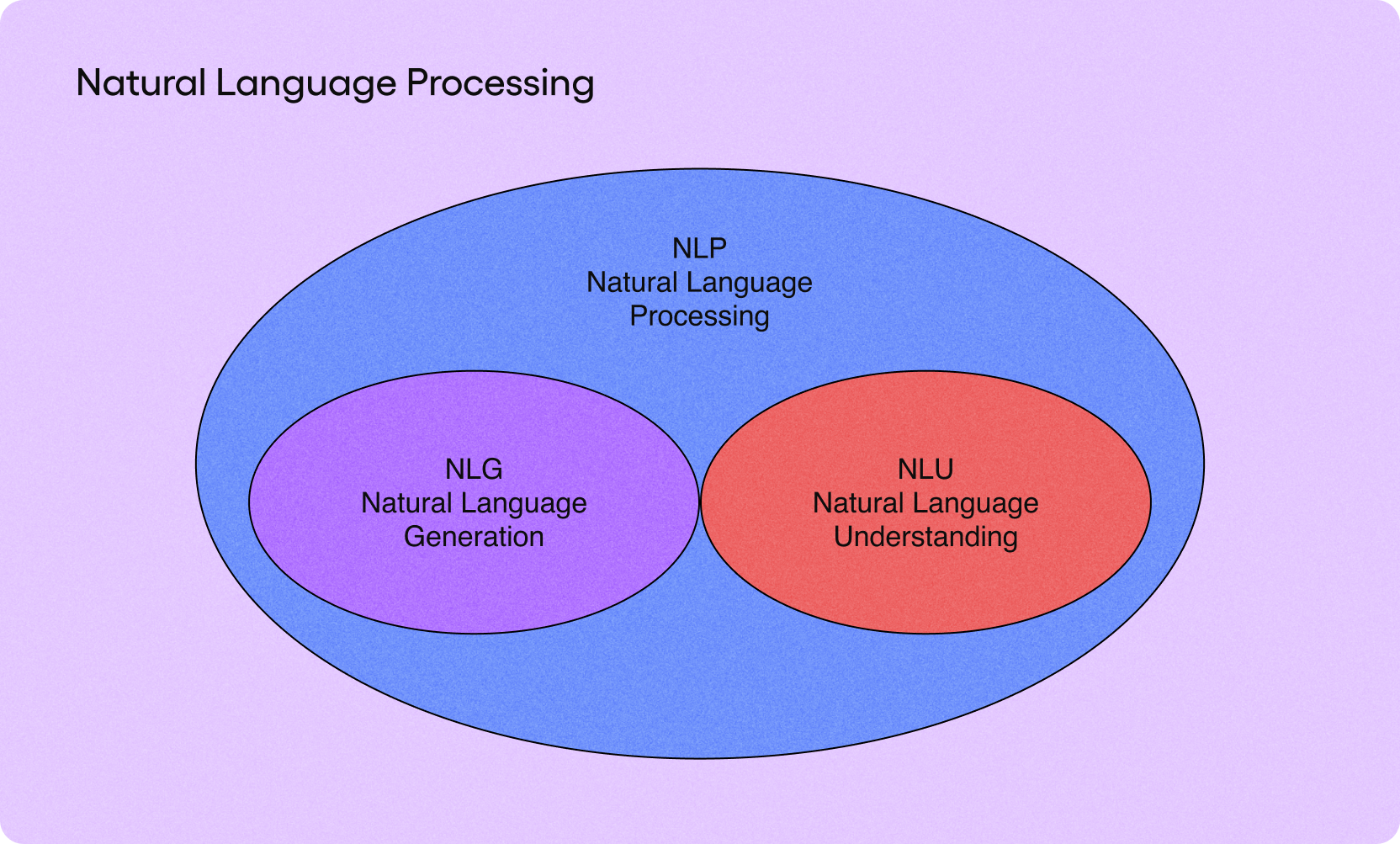
Supervised learning: According to TechTarget, “Supervised learning is an approach to creating artificial intelligence (AI) where a computer algorithm is trained on input data that has been labeled for a particular output. The model is trained until it can detect the underlying patterns and relationships between the input data and the output labels, enabling it to yield accurate labeling results when presented with never-before-seen data.”
Unsupervised learning: According to TechTarget, “Unsupervised learning is a type of machine learning (ML) technique that uses artificial intelligence (AI) algorithms to identify patterns in data sets that are neither classified nor labeled. Unsupervised learning models don't need supervision while training data sets, making it an ideal ML technique for discovering patterns, groupings[,] and differences in unstructured data. It's well-suited for processes such as customer segmentation, exploratory data analysis[,] or image recognition.”
These concepts are certainly useful, but how can you put them to use? It might sound complicated, but it doesn’t have to be! Let’s find out why.
Conversational AI for customer support: See it in action
We’ve seen earlier that a conversational AI chatbot can reduce the time to ticket resolution and lower customer support costs for businesses while providing a faster, more efficient customer experience.
What are some specific ways that an AI chatbot can be used?
Answer FAQs: Provide accurate answers to frequently asked questions so that agents can tackle higher-level questions.
Carry out a conversation: Have a basic conversation with a user and resolve low-level queries.
Respond to questions about any URL or file: Set up the bot by feeding it with a URL or file of your choice. The bot will be able to answer questions using this knowledge base.
Transfer to a human agent: Request a human agent to take over if the chatbot cannot answer a question or follow up with an appropriate response.
You can implement all of this with Sendbird’s SmartAssistant. The SmartAssistant is an AI chatbot, powered by ChatGPT, which supercharges customer support.
Here’s what this looks like:
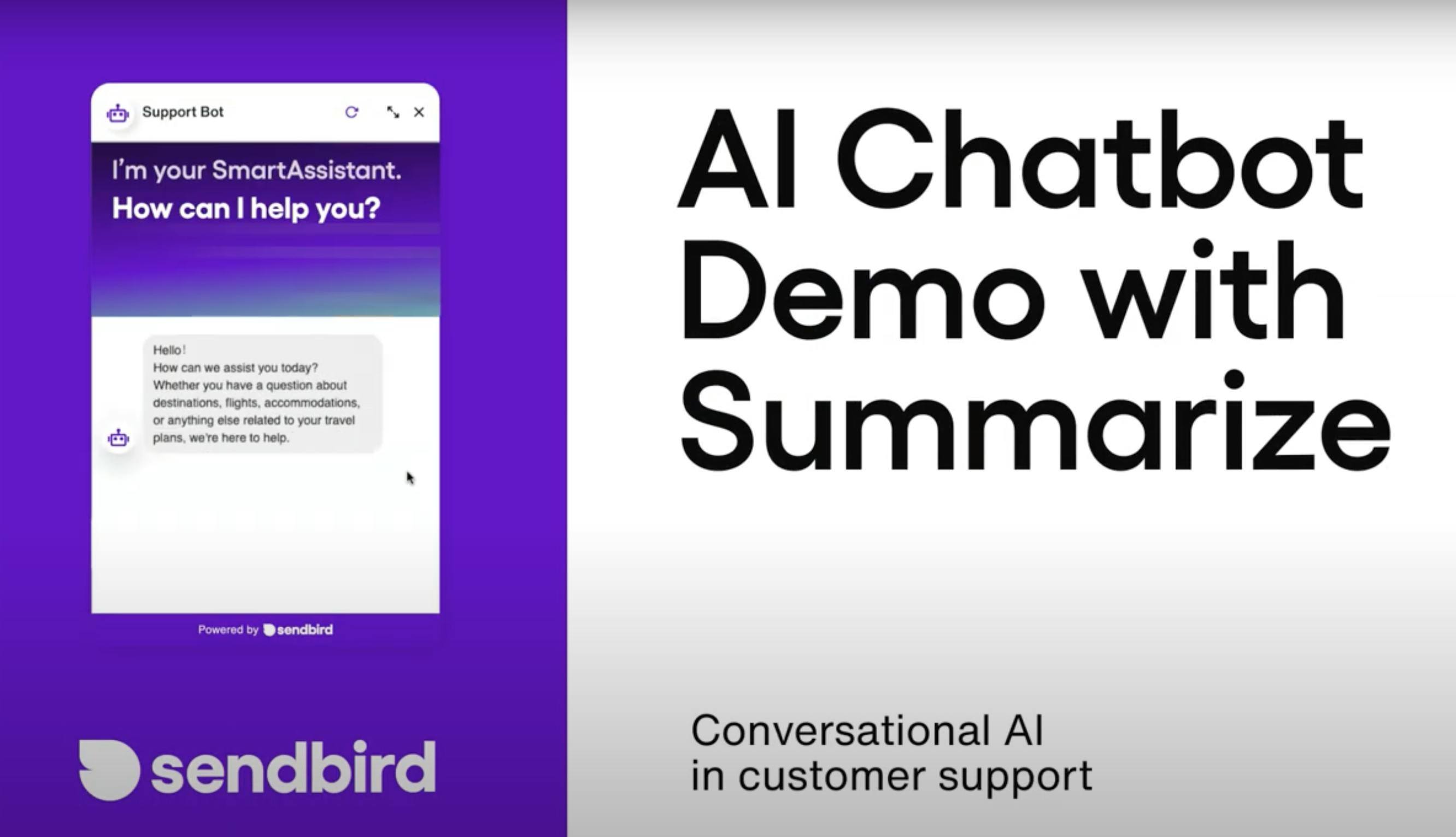
In this video, we can see the ChatGPT-powered SmartAssistant customer support bot speaking to a user to try to resolve the user’s query before transferring the conversation to an agent.
Create your own ChatGPT-powered SmartAssistant for customer support
The agent uses Salesforce to manage customer service requests with Sendbird’s Salesforce Connector, which is based on Sendbird’s chat solution and offers a complete chat interface inside the agent’s Salesforce instance.
To get this AI-powered chat functionality within your Salesforce instance, you can use Sendbird’s Salesforce Connector.
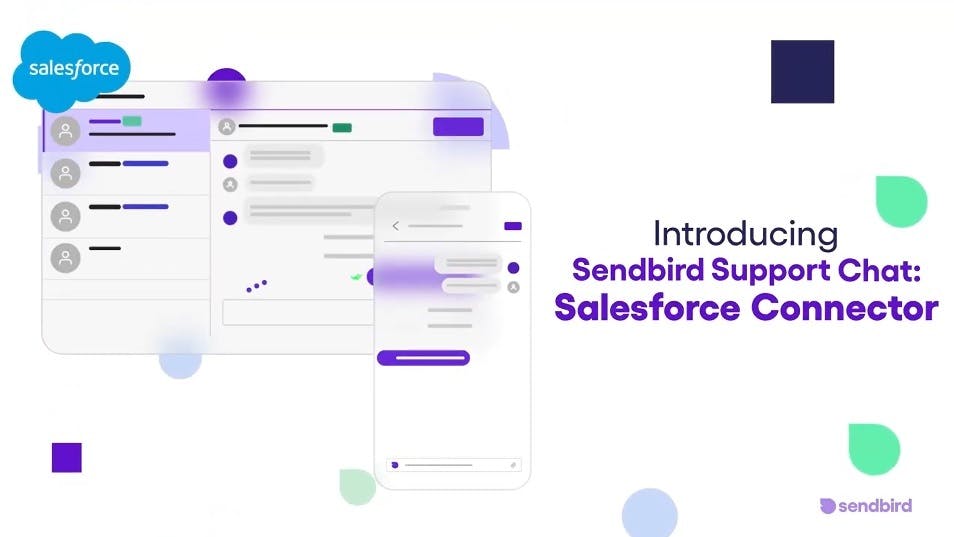
Sendbird Chat vs. Salesforce chat: At a glance
Sendbird’s support chat is powerful, and the Salesforce Connector takes it to a whole new level.
Salesforce offers chat as well; here’s why Sendbird’s support chat’s Salesforce Connector is better than the Salesforce Service Cloud chat.
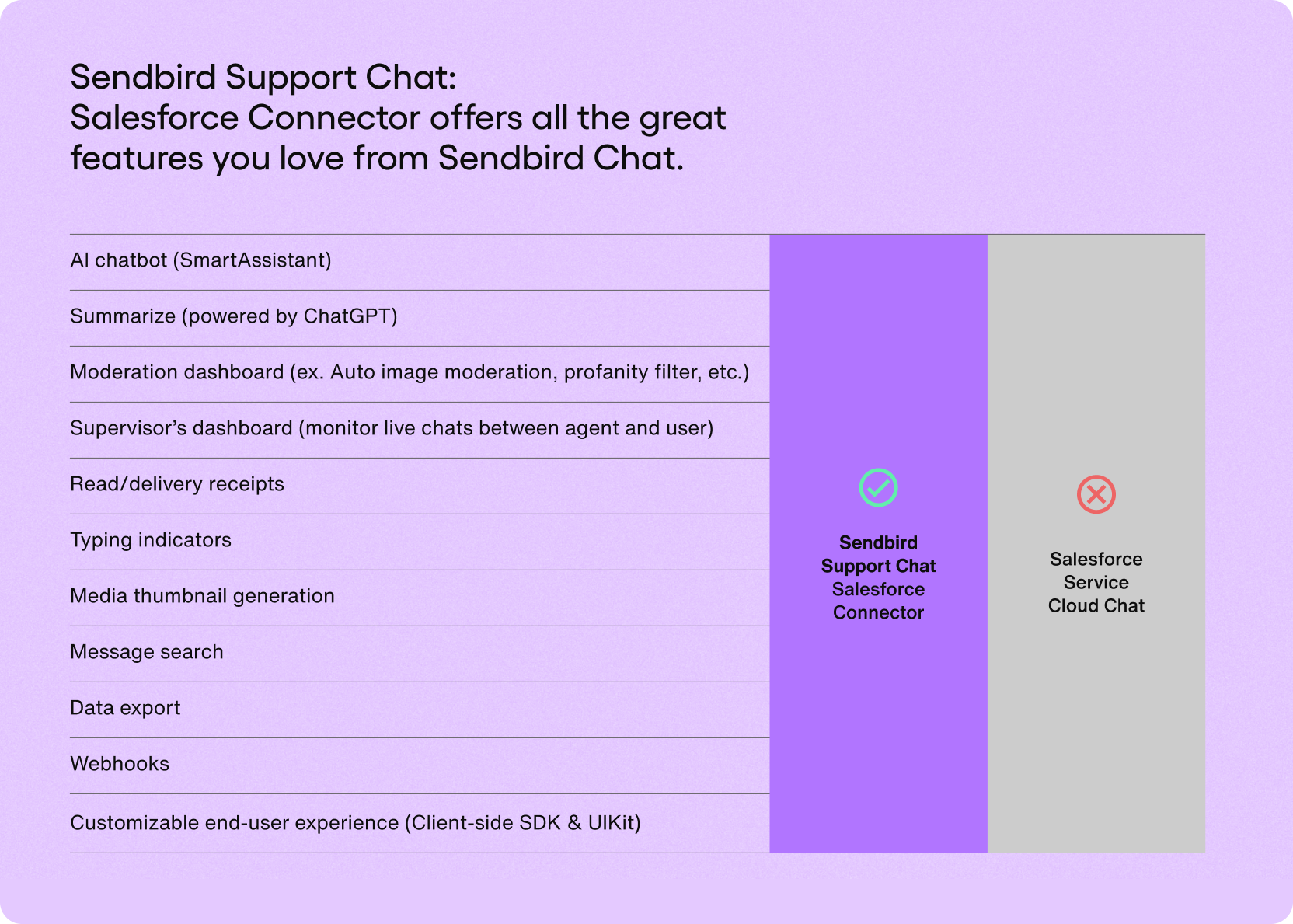
Salesforce Connector: Quick chat summaries powered by ChatGPT
One critically useful attribute of the Salesforce Connector is the Summarize feature. With this, live chat support agents can quickly receive a brief overview, with relevant context, of the customer's issues or concerns without spending unnecessary time rereading the entire chat. The Summarize feature is powered by ChatGPT and brings the power of AI chatbots to customer support.
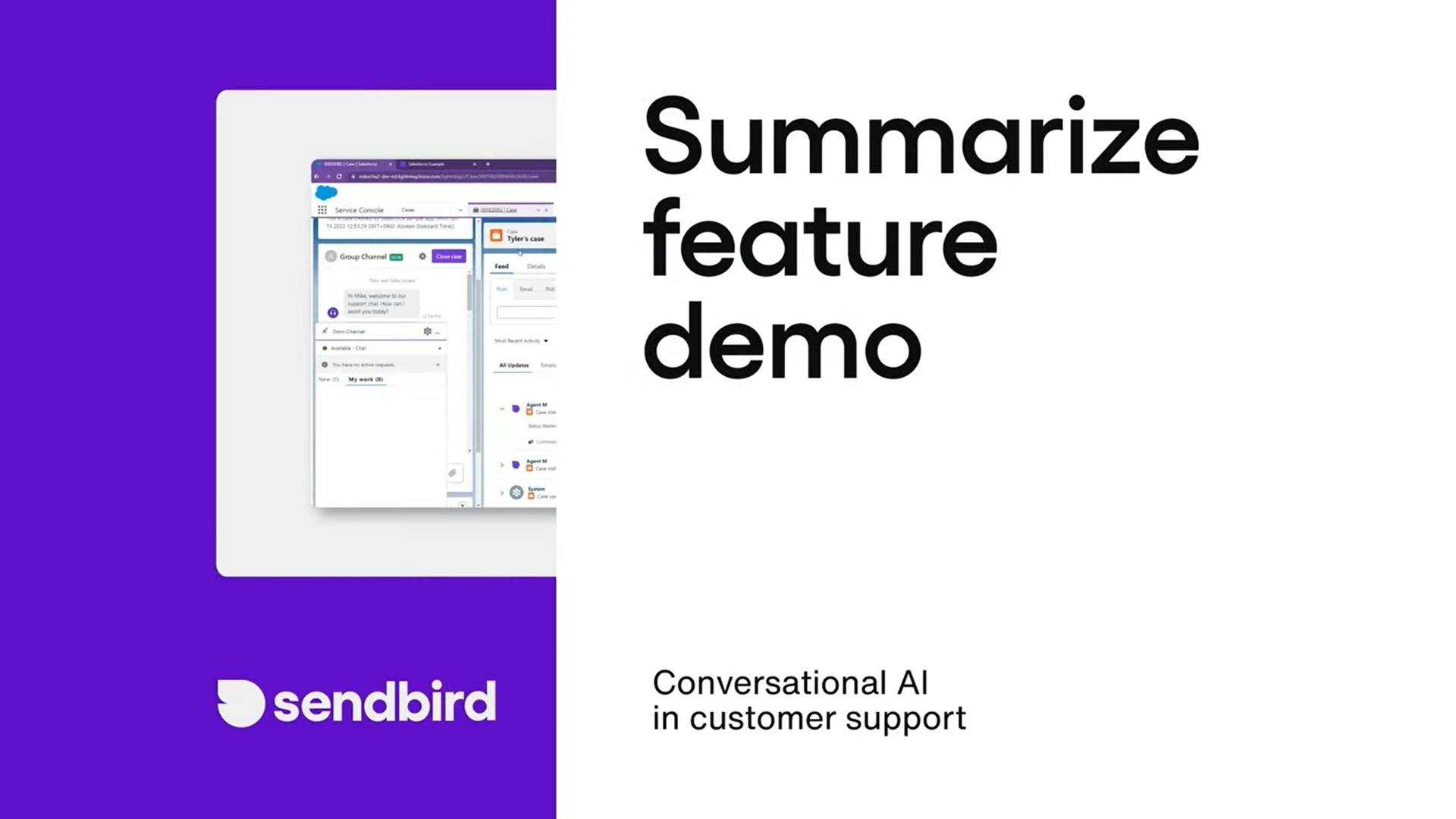
The video shows us how an agent can use the Salesforce Connector’s Summarize feature to automatically generate accurate, succinct summaries when transferring customer support tickets to a different agent and when closing a case.
Learn more about the Salesforce Connector’s Summarize feature
The power of conversational AI for other use cases: Docs and education
Because the SmartAssistant can use any URL or file as a knowledge base, it can be applied to almost any field. That’s why the SmartAssistant is a fantastic tool for use cases in addition to customer support, such as for answering questions related to documentation:

In addition, an Education bot can answer questions about any field of knowledge. You can see this Khan Academy chatbot having a conversation that involves providing responses to simple questions that don’t need to be answered by a human.

Ready to create one of your own? The next section describes how to do that.
How to build an AI chatbot widget for customer support and deploy it on your website or web app
In this section, we will demonstrate how to create a powerful AI chatbot, powered by ChatGPT, using the Sendbird conversations platform.
Prerequisites to create an AI chatbot
To get the most out of this tutorial, you will need:
Sendbird account: Go to the Sendbird Dashboard and create an account for a free trial. If you already have a Sendbird account, sign into your account.
- Knowledge base source: Prepare your data source in PDF or .txt format, or keep its URL with you. This will allow the AI chatbot to learn in advance. This data will serve as the knowledge base source that the AI chatbot will use to learn from and generate responses.
- Knowledge base sources for this tutorial:
PDF: Italian Cookbook
URL: Khan Academy
- Knowledge base sources for this tutorial:
Implementation: How to create an AI chatbot
Step 1: Get Sendbird Application ID
1. Create a new Sendbird application by clicking ‘Create application’ at the top left corner of your screen.

2. Choose a Product Type and enter a name for your application. Select the appropriate server region. Then, click Confirm.

3. Click the application you just created under Applications on the top-left corner of your screen.

4. On the Overview page, you can find the Application ID which you will need when initializing the Chat SDK. You will need this Application ID later in this tutorial!

Step 2: Navigate to your Sendbird Application
1. Go to the application you just created on Sendbird Dashboard.

2. In the left menu bar on the dashboard, click AI chatbots under Chat.

Step 3: Set up your AI chatbot
1. Click on the Create bot + button to set up a new AI chatbot.

2. In the Bot Name field, enter a unique Bot Name and Bot ID of your choice. Store the ID because you will need it when creating a channel for the Bot.

3. For the Bot AI engine, select OpenAI ChatGPT.
4. Specify Knowledge Base Source. There are three options:
- None: The bot uses the basic OpenAI Model, and you can adjust the specific parameters to your needs.

- File: You can select a PDF or txt file. Supported formats are .json, .txt, .md, and .pdf. The maximum file size is 5MB.

- URL: This includes the contents of a specified URL (Maximum: 10 URLs, up to 1,000 URL subpages per URL) that will be automatically analyzed and used as the bot's Knowledge Base Source.

5. Click Create.

Step 4: Testing your AI chatbot
After your AI chatbot is created, you can start a What are push notifications? conversation directly from the web interface.

The Sendbird Chat AI widget: Deploying your AI chatbot to your website
The low-code Sendbird Chat AI Widget makes it easy to deploy your AI chatbot to your website. This means that website visitors will have an AI assistant ready to answer questions, help them take actions, and offer to take feedback as visitors navigate through your site. These functions help to drive engagement and encourage users to interact with your site. This is important for marketing, sales, people operations, and more.
Before you implement this, keep your Sendbird App ID and Bot ID handy - you will need them for this.
1. Create React Project.
2. Install ChatAIWidget NPM Library.
3. Modify src/App.js as follows.
4. Run the code.
5. You will see the following web screen. Click the widget at the bottom-right corner.

AI chatbot use cases
The possibilities for your AI chatbot’s use are nearly limitless - here are a few popular use cases.
Education: The Sendbird Chat AI widget can be used to answer students’ questions, guide them through the problem-solving process, and provide information about schedules or student admin. Check out the bot below, or this Khan Academy Bot, as well as the Sendbird Docs AI Assistant.

Customer service: An AI chatbot can offer automated customer service assistance to field frequently asked questions and handle user inquiries in real-time, thereby freeing up agents to focus on more important tasks. Check out the example below.

Marketplaces and shopping: The AI chatbot can help you promptly respond to queries regarding product information, inventory status, reservations, shipping status, refunds, and more. It can also provide personalized recommendations, which is an important way for marketplaces to generate sales.

An AI chatbot can be used to streamline communication and boost user engagement in other industries like financial services, digital health, on-demand services, and online communities - the only limit is your imagination!
How to get started with Sendbird: Create and deploy an AI chatbot to your website
Congratulations! ⭐️You now know how to use the Sendbird platform to create an AI chatbot and deploy it to your website. If you need help with the material in the tutorial, please check out the docs or start a discussion in the Sendbird Community to get your questions answered.
Chatting with AI chatbots is great, but chatting with humans - and building lasting relationships - provides a different type of value! With Sendbird, you can build feature-rich in-app chat with all the features of a modern messenger without sacrificing control over your data or user experience. You can send your first human-to-human message today by creating a Sendbird account to get access to valuable (free) resources with the Developer plan. There’s a plethora of documentation and tutorials available for you to start building right away. If you want to take your chat app to the next level, you can do so with Sendbird Calls and Live.
Sendbird also provides SDKs and UIKit for a wide range of platforms, making it easier to integrate chat functionalities directly into your application.
If you have any other questions, please contact us. Our experts are always happy to help!
Happy AI chatbot building! 🤖
Bonus: How to build a ChatGPT bot in 4 easy steps

You may also want to check out the docs and more information about Sendbird’s ChatGPT integration!
Don’t forget the app: In-app customer support powered by conversational AI
In the previous section, you found out how to build an AI chatbot widget for customer support and deploy it on your website or web app. While it’s fantastic to have always-on customer support with an AI chatbot on your website, don’t forget about the tremendous potential of an AI chatbot on your mobile app.
Why is it essential for businesses to have these AI-powered chatbots to handle customer inquiries on the mobile app? First, people use mobile apps almost every time they pick up their phone - indeed, app usage accounts for nearly 90% and almost 4 hours of the time we spend on our phones.
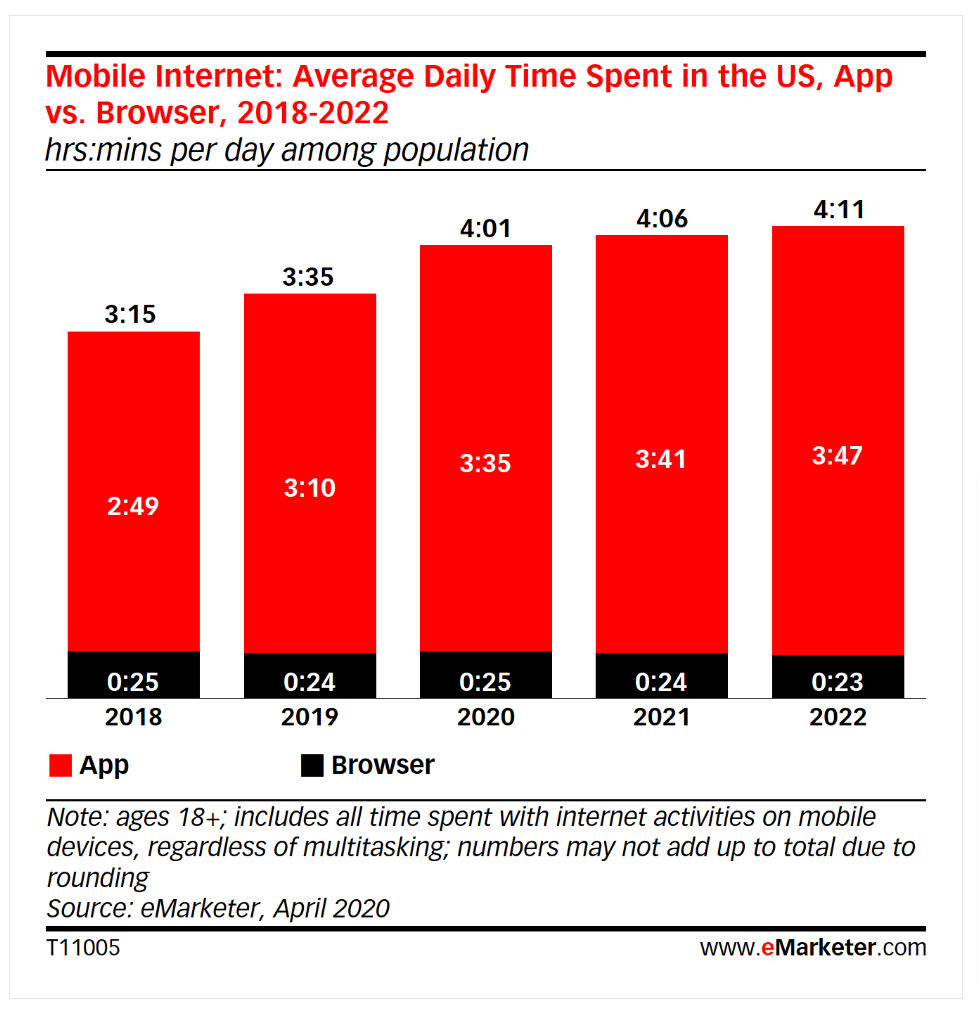
Businesses need to be where their customers are. If customers spend most of their time in apps, then businesses need to communicate with them in the mobile app.
As consumers expect instant responses to their questions, an AI chatbot in the mobile app helps to address this by providing quick answers. Provided internet connectivity is strong, consumers will get instant responses whenever and wherever they are - at home or on the go.
Because businesses meet consumers where they are, this focus on providing AI-powered support through a mobile app can lead to:
Increased customer satisfaction
Better conversion rates
Stronger customer relationships
Far-reaching brand loyalty
Companies can also consider tracking the devices through which customers access chat support and optimizing for mobile as necessary.
As you saw in Chapter 2, Conversational AI has heralded a new reality in chat support. Whether you decide to use this for chat support in your mobile app or on your website, you will likely see the same fantastic benefits.
What is the impact of conversational AI in customer support?
Sendbird’s conversational AI solution for customer support allows customer service agents to:
Reduce time to ticket resolution by 30%
Increase agent productivity by 30% - 50%
Increase CSAT by 2%
Revisit customer support AI in action
Want to implement this yourself by building an AI chatbot widget?
Here’s how Sendbird’s conversational AI solution for customer support helped our customers.
Super Home: Subscription-based home care services for homeowners
“Sendbird was the perfect solution to fulfilling our goal of enabling direct communication between subscribers and service providers through chat. With Sendbird’s customizable chat API, we could use - and pay for - only the features we needed. Sendbird’s chat solution also offered tremendous flexibility for us to implement our own bots in the future. And best of all, it was 50% cheaper than other solutions!”
Marijana Vlahović
Senior Product Manager, Super Home
Traveloka: Southeast Asia’s leading travel platform operating in 6 markets across Southeast Asia
- Key result: Today, more than 55 million monthly active users enjoy integrated customer services and no longer face the challenge of disconnected support chats.
“The chat that we built upon Sendbird is the number one communication channel among all of the communication channels that we use or that we provide to all our users []. Sendbird provides the best solution in terms of the technical capability and the amount of information that the Sendbird team could provide us, as well as [their] professionalism [].”
Adi Alimin
Senior Product Manager, Traveloka

Putting it all together: Start building an AI-powered customer support solution on Sendbird’s conversations platform
Whether you’re looking to supercharge an already robust customer service arm of your company, or you want to streamline the work of a lean customer service team, building an AI-powered customer support solution will yield results for your business. Agents will receive the support they need, CSAT will increase, and your business’s revenue will grow.
When you’re ready to implement an AI-powered customer service solution, our experts are ready to walk you through the first steps. We look forward to assisting you in any way possible with your project!
















